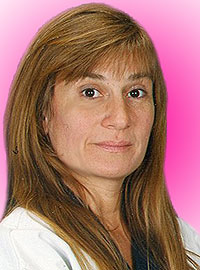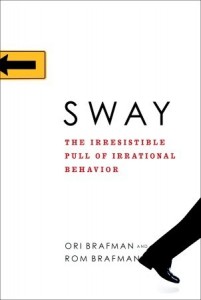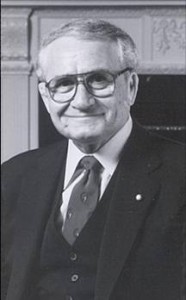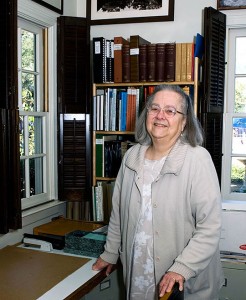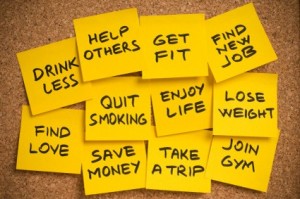When it comes to women’s self-defense, you can’t beat confidence — and a well-timed poke under the Adam’s apple.
“One of the most important things women need to know about their safety is that there are ways you can help avoid being picked as an intended victim,” says Teri Coffee McDuffie, owner and founder of Santa Barbara Women’s Self-Defense. McDuffie talks with Leslie Dinaberg about how she learned to be capable, confident and in control-and how she’s teaching others to do the same thing.
Leslie Dinaberg: How did you get started with Santa Barbara Women’s Self-Defense?
Teri Coffee McDuffie: I’ve been training in martial arts for 26 years. After about five or six years, I realized that the majority around me were men … and I thought, why is that? Women need it far more than men … so why aren’t more women doing this?
I realized it’s because we have much more commitment in life to family, to our husbands, to what’s going on with children and life. Fulltime careers kind of envelop us, and there’s not much time to fully commit to martial arts.
So I thought, how can I take this program that I’m doing in martial arts and take snippets of the best of what I’m learning and create a small program that will be basic and simple and make it something they can do in a short period of time? I designed it about 20 years ago.
LD: Obviously safety is the number one thing, but what about physical fitness?
TCM: Anybody can do it. … We’ve trained people that are 87 years old, kids that are ten years old; we’ve done people with physical disabilities in every way.
… At the Braille Institute because we are teaching the senior citizens over there and some of the people do have sight disability. …. In the fall, we had a class of ten and we’re going back in the springtime. And we volunteer there, that is a lot of fun.
LD: How long is the course?
TCM: In general we have an eight-hour course, and it’s divided numerous ways for people’s convenience.
LD: It sounds like you’re working with a wide variety of ages.
TCM: Yes, but the most frequent group that comes in here are in their 40s and 50s because they seem to be the group that truly understands the need for it in their lives in terms of feeling more completely and fully balanced.
… It’s really hard to get actually the target group for victimization, which is the college age. …We can’t get them to recognize that they can be one of those victims.
LD: I think in the college atmosphere the perception of strangers is different than anywhere else too.
TCM: Absolutely. … But 90 percent of people that are attacked, it’s done by somebody that they’ve met or know.
LD: Really?
TCM: It’s a friend or somebody that they’ve been acquainted with, like somebody bumping into them every day, saying hello, somebody that drops off their mail, somebody that they meet in the grocery store that’s bagging their groceries, that says hi to them, that they have some comfort level with.
LD: That totally flies against my assumptions, because you would think I would know where to find that person and identify them.
TCM: It has to be somebody that’s going to have that kind of vulnerability and the more vulnerable people are going to not react when they are attacked, they are going to be more fearful, they are going to be the victim.
… Everybody can be a target. It’s not about how cute you look. They’re looking for attitude, appearance and how you’re walking around. It’s about how you’re presenting yourself out there in terms of vulnerability. That’s what they’re looking for. It can be anybody.
LD: There’s such a fine line, as a parent, you want to teach your children to be strong and self-confident and cautious, but at the same time you don’t want them to be completely scared of every stranger that talks to them.
TCM: Great, now what you just said right there is what we battle against because we have so many mothers out there saying, “I’m not sure if I can have my daughter take your course because what I’m worried about is she’s going to end up paranoid.”
And we say “No, if your daughter takes this course, she will feel so much more in control because instead of feeling fearful that things will happen to her, she’s going to reverse that and take control of more of her life and take control of situations so things don’t happen to her.
LD: What are some of the things you teach?
TCM: We tell people they have so many different choices. What we start out doing is just showing just a simple strategy. If someone walks up to them and they feel uncomfortable because they’ve violated their space, we give them an option such as saying, “stop” in a big voice, or they just step back instead of stepping forward and put their hands up and use their voice.
LD: How long does it typically take for people until it the strategies become instinctual?
TCM: I think very quickly because we do it frequently during the class.
LD: There’s certain element, at least in my own thought process, of embarrassment. What if that person wasn’t really walking toward me?
TCM: We talk about that it’s okay to be embarrassed and be wrong but be safe. Listen to your instincts, it’s important, and if you’re wrong you’re safe.
… When you’re choked, this one is just a good one to know, you find someone’s Adam’s apple and then right under the Adam’s apple you just take your fingers and expand it straight in. It doesn’t hurt them, but it does make them extremely uncomfortable. No matter how powerful they are, no matter how big they are, they will back off to that. It doesn’t take any strength whatsoever.
LD: That’s also not intimidating. I think some people can’t picture themselves jumping around, but poking someone in the Adam’s apple seems doable.
TCM: Yeah and if somebody jumped on you and all of a sudden they’re choking you, you can reach out in the dark and find the Adam’s apple. We do different scenarios like that. … The things that scare you in your mind, that are so big in your mind and you can have a visual release from that.
LD: You mentioned doing some mobile training where you go into businesses?
TCM: We go into places of business and we do whatever structure works for them. … It’s really good for the employees in terms of morale boosting, because they feel better getting in their cars at night and it’s just a safer environment for everybody.
LD: Do you go to martial arts competitions?
TCM: Yes. I go to national competitions all the time. … It’s wonderful because you get to meet people from all around … year after year you become bonded with those people. We’re one huge family. …I’m going to Korea this year to test for sixth degree in the fall.
LD: If you could be invisible anywhere in Santa Barbara, where would you go and what would you do?
TCM: When the women leave here and have taken the course-if I was invisible, so I didn’t have to be a voyeur-I would like to follow them around a little bit and see how they’re walking around in terms of their attitude and empowerment. How they are looking out in the world.
LD: Can you recognize from the posture of somebody that has been trained in self-defense?
TCM: You bet. From the first day they’ve been in this course to the last day they’ve been in this course, they are like night and day … it’s just amazing.
Vital Stats: Teri Coffee McDuffie
Born: San Francisco, CA; November 13, 1959
Family: Husband, Ian McDuffie
Civic Involvement: Braille Institute, Obama Campaign
Professional Accomplishments: Owner/founder of Santa Barbara Women’s Self-Defense; Five-time national champion, fifth degree black belt; Certified martial arts instructor.
Best Book You’ve Read Recently: Gift of Fear by Gavin DeBecker.
Little-Known Fact: “I’m very shy. A lot of people wouldn’t think I’m very shy but that’s probably what has really driven me to do all of these other things that I’ve done is because I am moving in the opposite direction of what I want to do, which is just curl up and hide in the corner, which is absolutely what I want to help people not do.”

